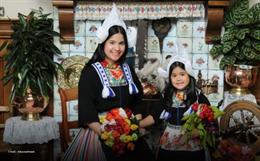Morris dance costumes are practical folk outfits of white cotton or linen, decorated with bells, ribbons and embroidered waistcoats. Born from medieval village festivals, they symbolise renewal,...
The Scottish kilt blends ancient heritage with modern style, symbolising pride, identity and bold individuality. Born in the Highlands, shaped by rebellion and revival, it is crafted from...
Belgian lace dresses embody centuries of craftsmanship, cultural identity, and quiet elegance. Each piece reflects patience, heritage, and artisanal mastery passed through generations. Rooted in...
Neo-minimalism and hyper-maximalism reflect opposing yet equally relevant responses to modern lifestyles. One prioritises calm design, versatility, and conscious consumption, while the other...
Supplier diversification is now central to fashion supply chain resilience. Multi-regional sourcing reduces exposure to tariffs, disruptions, and compliance risks. Technology enables deeper...
Regenerative fashion marks a shift from reducing harm to actively restoring ecosystems and communities. Consumers now expect full traceability, circular design, and measurable impact alongside style ...
Next-generation leathers are redefining fashion by reducing environmental harm and eliminating animal cruelty. Innovations like mycelium, lab-grown collagen, and plant-based materials match...
Financially strong apparel companies are outperforming in a slowing market by combining lean operations, AI-driven demand forecasting, diversified revenue channels, and agile supply chains....
The Volendam dress is a powerful symbol of Dutch cultural identity rooted in a fishing village’s history. Its distinctive bonnet, striped skirt and apron reflect craftsmanship, practicality and...
Digital customer experience has become central to fashion retail strategy, shaping discovery, purchase, and post-sale engagement. AI-driven personalisation, immersive AR and VR tools, and unified...
Fanny Vermandel
Gabi Seligsohn
Arun Sirdeshmukh
Anurag Batra
Rahul Mehta
Aseem Prakash
Abhay Gupta
Bill D’Arienzo
Pradip Mehta
Rahul Mehta


 (2)ss_Small.jpg)
_Small.jpg)


-s_Small.jpg)

-s_Small.jpg)
-s_Small.jpg)











_8.JPG)
